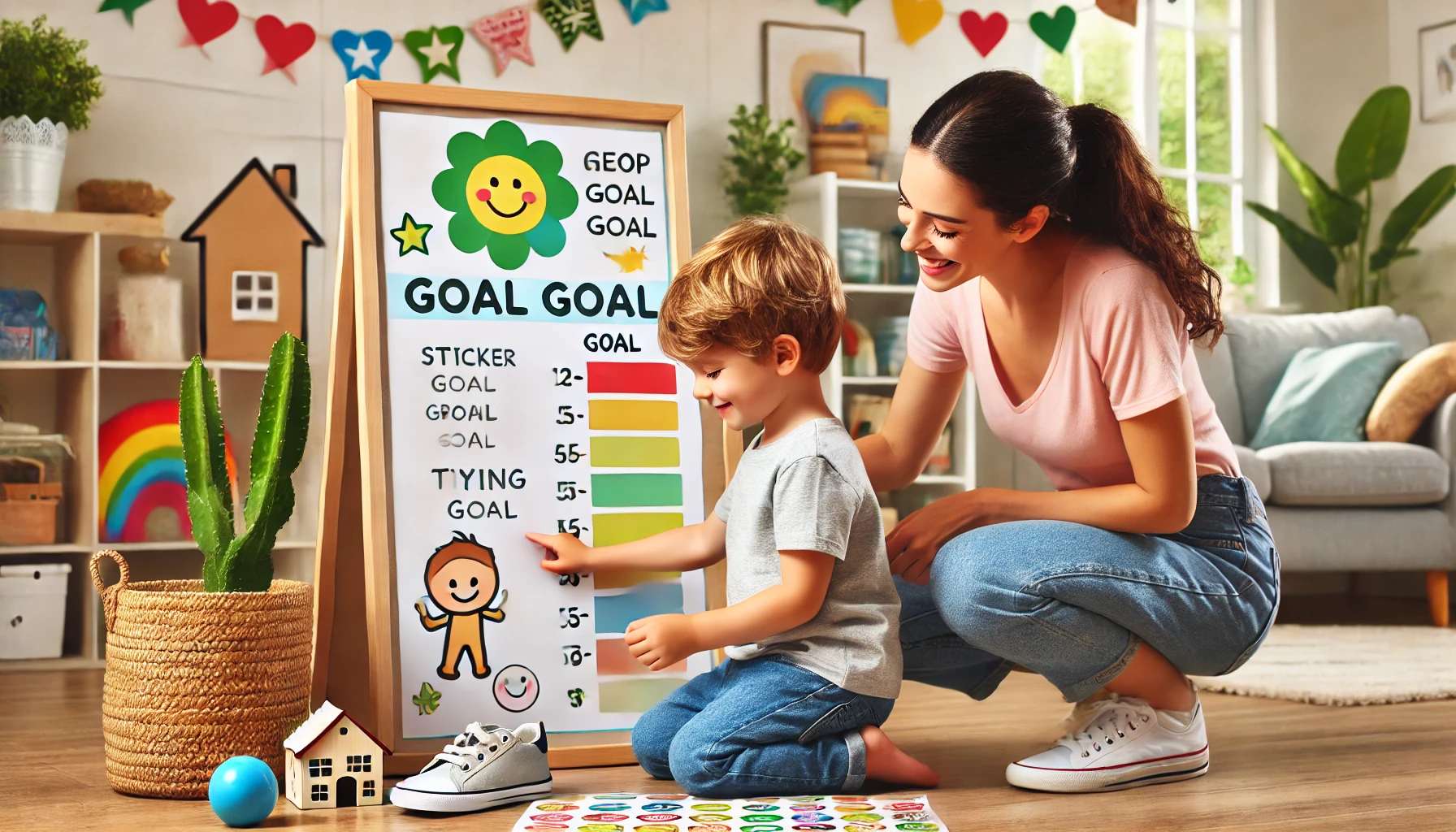How to Teach Young Children About Setting Goals and Working Toward Them
Introducing young children to the concept of goal-setting helps build their confidence, focus, and determination. Even simple goals—like learning to tie their shoes or remembering to put toys away—teach kids how to plan, persist, and celebrate their progress. By guiding children through age-appropriate steps, parents can help them develop lifelong skills for success and self-motivation.
Why Goal-Setting Is Important for Kids
- Builds confidence – Helps kids realize they can achieve things on their own.
- Teaches persistence – Encourages effort and follow-through.
- Improves focus – Helps children stay on task with clear intentions.
- Fosters independence – Shows them they can take charge of their progress.
- Celebrates growth – Highlights the joy of small wins and learning.
1. Explain What a Goal Is
Start by helping kids understand the concept of goals in a fun, simple way.
Activity Idea:
- Say: “A goal is something you want to do or learn, and you keep working on it until you get there.”
- Give examples: learning to ride a bike, building a LEGO tower, or finishing a puzzle.
- Ask: “What’s something new you want to do all by yourself?”
What Kids Learn:
- That a goal is a challenge with a reward.
- How progress happens over time.
- That setting a goal gives them something exciting to work toward.
2. Start With Small, Achievable Goals
Young children need early success to stay motivated.
Activity Idea:
- Set a short-term goal like: “I will brush my teeth every night this week.”
- Use a sticker chart to track each successful day.
- Celebrate with a high five or special reward at the end of the week.
What Kids Learn:
- How to break a big task into daily actions.
- That consistent effort leads to success.
- The excitement of achieving something on their own.
3. Break Big Goals Into Steps
Help kids understand that big accomplishments take time.
Activity Idea:
- If a child wants to build a model or learn to zip a jacket, break it into smaller steps.
- Track each step: Step 1 – gather supplies; Step 2 – start slowly; Step 3 – finish and show someone.
- Use visuals, like checklists or drawings, to map out the journey.
What Kids Learn:
- That progress happens one small step at a time.
- How to stay focused and avoid getting overwhelmed.
- That every step forward is part of the success.
4. Let Them Choose Their Own Goals
Ownership increases motivation and interest.
Activity Idea:
- Ask: “What would you like to get better at?” or “Is there something you want to learn this month?”
- Let them choose something meaningful, like learning to write their name or do a puzzle.
- Guide them to make it specific and reachable.
What Kids Learn:
- That their ideas and dreams matter.
- How personal goals lead to pride and excitement.
- That they’re capable of setting and following through.
5. Use Visual Tools to Stay on Track
Charts and drawings make goals fun and visible.
Activity Idea:
- Create a goal board with pictures or drawings representing their goals.
- Make a progress ladder or steps leading to the goal.
- Place it somewhere visible so your child sees their progress daily.
What Kids Learn:
- That progress is visible and measurable.
- How tracking helps them stay focused.
- The fun in seeing how far they’ve come.
6. Celebrate Effort, Not Just Results
Teaching kids to value effort over perfection builds a growth mindset.
Activity Idea:
- Say: “You worked really hard on that today! I’m proud of you for trying.”
- Point out determination and improvement, not just the final outcome.
- Ask: “What helped you keep going?” to encourage reflection.
What Kids Learn:
- That trying their best is always worth celebrating.
- How to take pride in their own effort.
- The power of not giving up.
7. Support and Encourage Without Taking Over
Let children lead the process, while you offer gentle guidance.
Activity Idea:
- Resist the urge to fix or finish tasks for them.
- Offer help with questions like: “Do you want a little help or do you want to try again?”
- Celebrate their progress even if the goal isn’t perfect yet.
What Kids Learn:
- That they can overcome frustration with support.
- How to stay motivated even when something is hard.
- That independence feels good and builds confidence.
8. Reflect and Set New Goals Together
Reflection helps reinforce learning and growth.
Activity Idea:
- After finishing a goal, ask: “What was your favorite part of working on this?”
- Let them draw or talk about how they felt.
- Help them choose a new goal to keep the momentum going.
What Kids Learn:
- That goal-setting is a repeatable process.
- How to build on previous success.
- That they are always growing and learning.
Final Thoughts
Teaching young children to set goals and work toward them is a powerful way to help them grow into focused, motivated, and resilient individuals. By making goal-setting fun, clear, and rewarding, parents can empower their children to build confidence, take initiative, and discover the joy of achieving something through their own effort.
